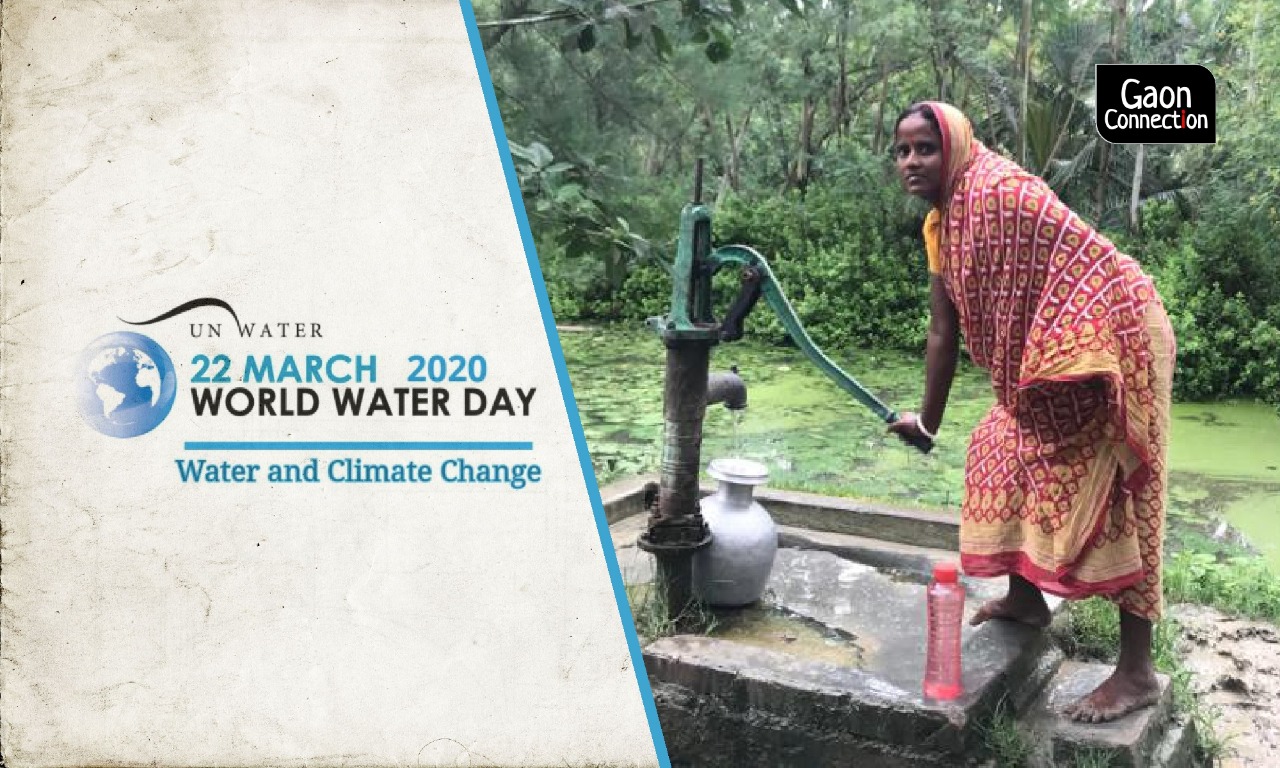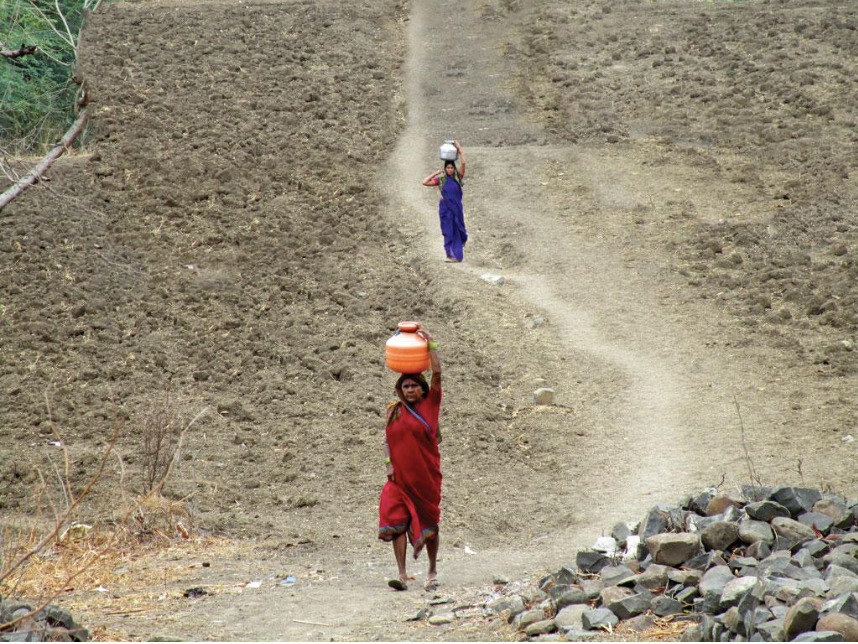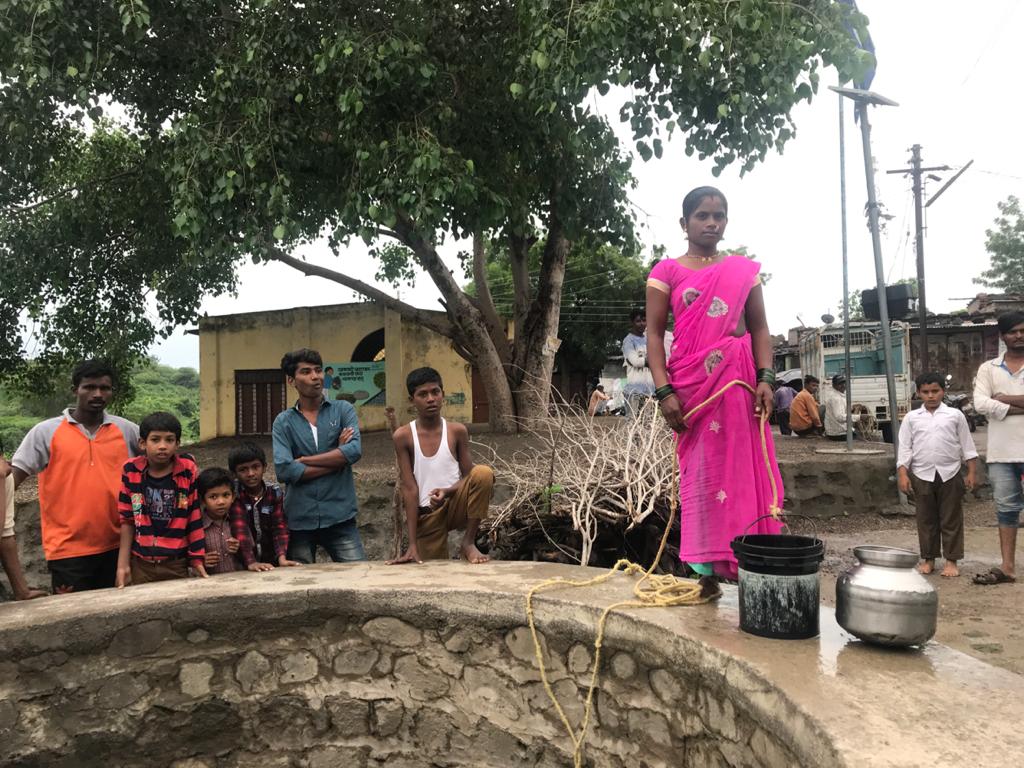Communities most vulnerable to climate change have the lowest access to clean water
The government has committed to provide piped water to every household by 2024. But climate crisis threatens the viability of this promise. Poor and marginalized communities without access to clean water are expected to suffer the most as climate change puts more pressure on already stretched water services


Sunita Dolai and her family used to live in Ghoramara island of the Indian Sundarbans Delta. More than a decade ago, they moved to the neighbouring Sagar Island, as four hectares of their ancestral agricultural land was washed away into the sea. Dolai family now lives in Jibantala village of Sagar Island where 500 families share four hand pumps to meet their drinking water needs. In the adjoining Kamlapur village, there is one hand pump for 80 families.
About 1,000 kilometres away, Rangamma, a fisherwoman living in Mangamaripeta village of Visakhapatnam district in Andhra Pradesh, walks half a kilometre to the public standpost to fetch water. She has to make nine such trips a day, with two pots of water perched on her head, so that her family has sufficient drinking water for the next two to three days. Most drinking water sources in Mangamaripeta fishing village on the east coast of the country have turned saline. The Public water supply comes every two to three days with no fixed timings.
“Climate change will impact every aspect of life on the planet – and its effect on vulnerable communities, water resources and water supply systems threatens to be one of the most devastating,” points out the recent report, On the Front Line: The state of the world’s water 2020, by WaterAid, an international non-governmental organisation focused on water, sanitation and hygiene.

The report goes on to note climate change increases the unpredictability of weather patterns [changing rainfall patterns] and the frequency and severity of extreme weather events [cyclones, droughts, floods] leading to greater hardship. And, as water sources dry up, or get contaminated, women and girls – who usually bear the heavy burden of water collection – have to walk even further to fetch water, giving them less time to earn a living or stay in school.
Access to clean water in a changing climate is crucial. Clean water, as noted by the WaterAid, is the first line of defence against the impacts of climate change. But, communities most vulnerable to climate change have the lowest levels of access of clean water. Ironically, these vulnerable communities —- poor and marginalized — have not created the problem of global warming and climate change. But, suffer the impacts the most, including dwindling water sources.
Last year, Gaon Connection conducted a one-of-its-kind rural survey across 19 states in the country. It found over 39 per cent women in rural India had to step out of their homes to fetch water. And of these, 16 per cent women said they had to daily walk between one kilometre (km) and five kms to get drinking water for their families.

Take the case of Basanti Devi of Kusmai tola (hamlet) in Domchach block of Koderma in Jharkhand. Last year, when the country faced an acute drought, all four hand pumps and two dug wells in her village dried up. She had to daily walk a kilometre to the neighbouring Laxmipur village to fetch water for her family. Every day she would make three trips to Laxmipur and in each trip carry two pots of water on her head and one small bucket in her hand.
Climate change is making things worse for women like Sunita Dolai, Rangamma, Basanti Devi and millions more in the country. Changing rainfall patterns leading to droughts and floods, extreme weather events like cyclones, rising sea levels and salinity ingress, is making it more and more difficult for women (and young girls) to source water to meet the water needs of their families.
Last year, which was an acute drought year, an 11-year-old girl died in Maharashtra due to heatstroke white collecting water from a village hand pump. Another 13-year-old girl died in the state last year after she lost her balance while trying to fetch water from the bottom of a dug well.
In the Climate Risk Index 2020, a climate change vulnerability ranking of countries by Germanwatch, India is the fifth most vulnerable country to climate change. India’s rank has worsened from the 14th spot in 2017 to 5th in 2018 in the global vulnerability ladder. This increased vulnerability is due to severe rainfall, heavy flooding and landslides.

The recent WaterAid reports points out “despite being a human right and the first line of defence, a paltry amount of climate finance is currently invested in getting clean water to everyone, everywhere. Money for WASH [water, sanitation and hygiene] adaptation accounts for just $9 billion – or 1.6% of total climate finance.”
In India, US$ 3.20 of climate finance is received per person per year on average for both adaptation and mitigation. The report warns unless the water sector can undergo significant changes, people without access to reliable and clean water will suffer the most as climate change puts more pressure on already stretched water services.
The state of the world’s water 2020 report offers an action plan to address the challenge of clean water access in a changing climate. Firstly, governments must include clean water in their climate adaptation plans.
Secondly, governments must develop clear strategies to address the huge capacity gaps that currently exist in order to bring climate-resilient water to all. There is a need to increase human resource capacity across the water and sanitation sectors. A sufficient budget should be allocated to hire and retain staff, with decent incentives and good training offered. Rural areas must be prioritised and the attraction, recruitment, retention and advancement of women within the sector is also vital, as they are typically under-represented.
The international non-profit has also demanded a tenfold increase in current levels of climate finance that goes to WASH services from donor governments and climate finance institutions.
Unless these issues are addressed, Basanti Devi of Kusmai tola will have to continue making several trips to the neighbouring village to fetch water three times a day. And what when that water source dries up, too?

